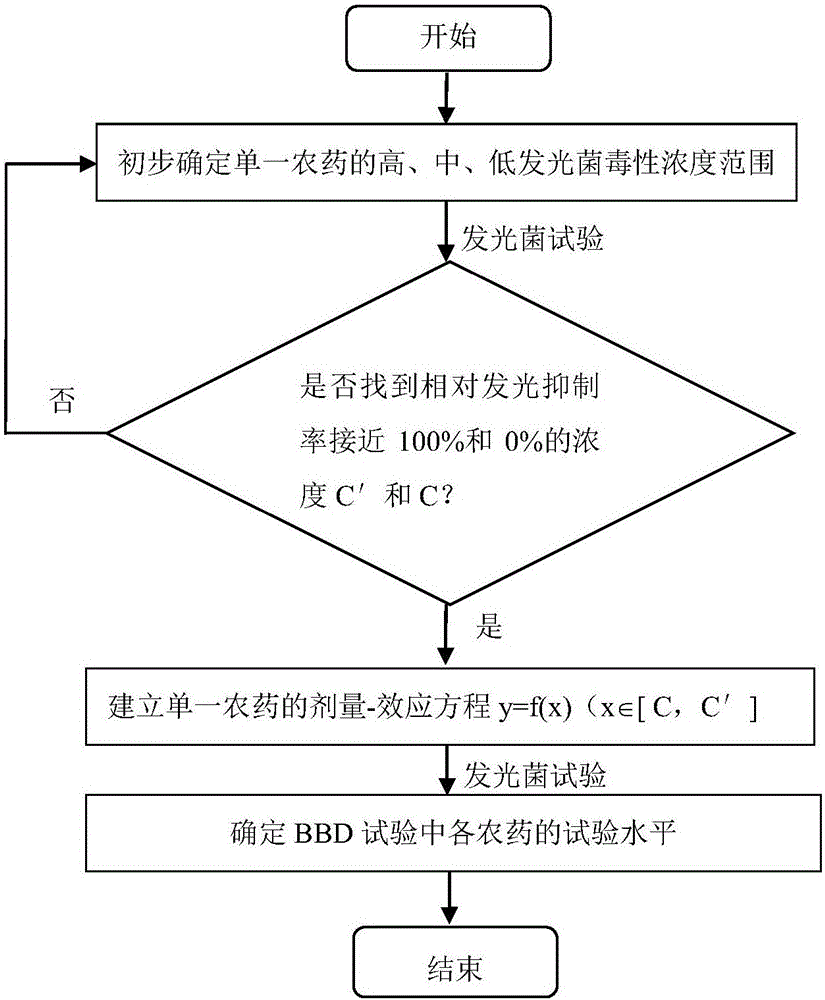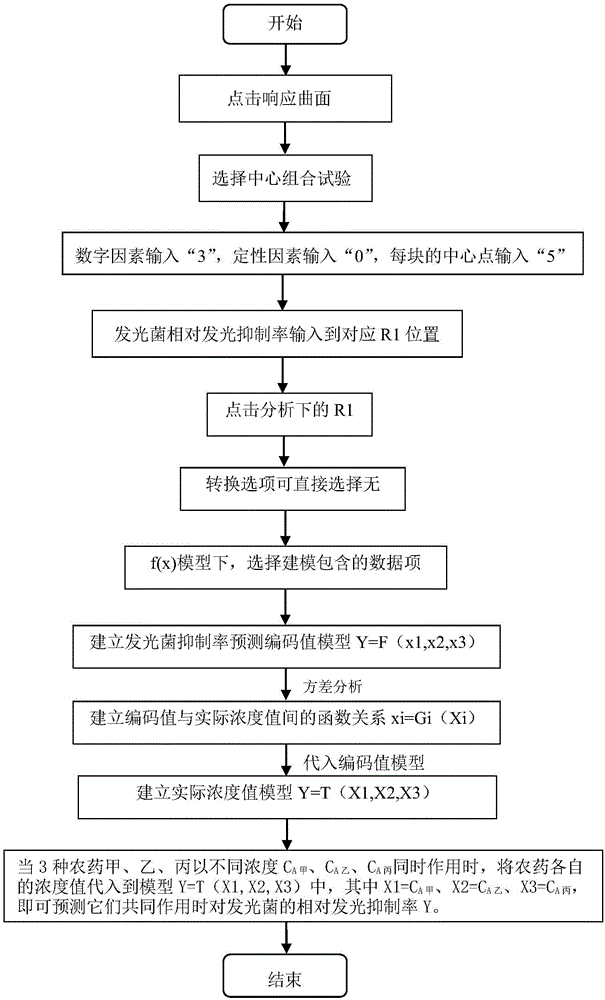Method for predicting acute joint toxicity of three pesticides to photogenic bacteria
A technology combining toxicity and luminescent bacteria, which is applied in chemiluminescence/bioluminescence, measuring devices, and material analysis through optical means, can solve the problems of lack of quantitative evaluation and acute joint toxicity prediction methods, and large experimental workload.
Inactive Publication Date: 2017-03-22
JILIN UNIV
View PDF6 Cites 4 Cited by
- Summary
- Abstract
- Description
- Claims
- Application Information
AI Technical Summary
Problems solved by technology
[0006] The technical problem to be solved by the present invention is to overcome the problems of the existing toxicological acute combined toxicity evaluation technology, such as large test workload, lack of quantitative evaluation and acute combined toxicity prediction method, and provide a method for predicting the acute combined toxicity of three pesticides on luminescent bacteria
Method used
the structure of the environmentally friendly knitted fabric provided by the present invention; figure 2 Flow chart of the yarn wrapping machine for environmentally friendly knitted fabrics and storage devices; image 3 Is the parameter map of the yarn covering machine
View moreImage
Smart Image Click on the blue labels to locate them in the text.
Smart ImageViewing Examples
Examples
Experimental program
Comparison scheme
Effect test
Embodiment
[0124] Take the combined toxicity evaluation of three pesticides, trichlorfon, kysstrobin and imidacloprid, commonly used in greenhouse vegetable cultivation as an example:
the structure of the environmentally friendly knitted fabric provided by the present invention; figure 2 Flow chart of the yarn wrapping machine for environmentally friendly knitted fabrics and storage devices; image 3 Is the parameter map of the yarn covering machine
Login to View More PUM
 Login to View More
Login to View More Abstract
The invention discloses a method for predicting acute joint toxicity of three pesticides to photogenic bacteria, which aims to overcome problems that a conventional toxicology acute joint toxicity evaluation technique is large in testing workload and quantitative evaluation and acute joint toxicity action prediction methods are not available. The method for predicting the acute joint toxicity of three pesticides to photogenic bacteria comprises the following steps: (1) performing pretesting, namely confirming the testing concentration of different pesticides in official tests, wherein the step of performing pretesting, namely confirming testing concentrations of different pesticides in official tests comprises the following steps: (1) primarily confirming high, medium and low photogenic bacteria toxicity concentration ranges of a single pesticide; (2) establishing a dosage-effect equation that y is equal to f(x)(x belongs to [C,C']) of the single pesticide; (3) confirming the testing concentrations of different pesticides in the BBD tests; (2) confirming testing schemes through three-factor three-level center combined testing design (BBD); (3) performing official testing, namely, testing the relative light emission inhibition rates of different test groups of photogenic bacteria; and (4) establishing a model to predict the acute joint toxicity of the three pesticides to the photogenic bacteria.
Description
technical field [0001] The invention relates to a method for predicting the acute biological toxicity of compounds, more precisely, the invention relates to a method for predicting the acute combined toxicity of three pesticides to luminescent bacteria. Background technique [0002] The toxicity test of luminescent bacteria is an effective method for microbial detection of environmental pollution and the toxicity of detection substances, which emerged after the 1970s. The biotoxicity test of luminescent bacteria using modern photoelectric detection means is one of the main biotoxicity determination methods in modern toxicology research. The International Organization for Standardization (ISO), the United States and China have promulgated relevant standards for the evaluation of water quality toxicity by luminescent bacteria. [0003] There are many kinds of pollutants in the environment, and the joint toxicity of compounds has been widely concerned. At present, the combine...
Claims
the structure of the environmentally friendly knitted fabric provided by the present invention; figure 2 Flow chart of the yarn wrapping machine for environmentally friendly knitted fabrics and storage devices; image 3 Is the parameter map of the yarn covering machine
Login to View More Application Information
Patent Timeline
 Login to View More
Login to View More IPC IPC(8): G01N21/76
CPCG01N21/763
Inventor 张蕾戚飞飞高燕刘晗于海业张刚付强付海明
Owner JILIN UNIV
Features
- R&D
- Intellectual Property
- Life Sciences
- Materials
- Tech Scout
Why Patsnap Eureka
- Unparalleled Data Quality
- Higher Quality Content
- 60% Fewer Hallucinations
Social media
Patsnap Eureka Blog
Learn More Browse by: Latest US Patents, China's latest patents, Technical Efficacy Thesaurus, Application Domain, Technology Topic, Popular Technical Reports.
© 2025 PatSnap. All rights reserved.Legal|Privacy policy|Modern Slavery Act Transparency Statement|Sitemap|About US| Contact US: help@patsnap.com



